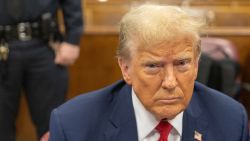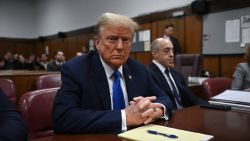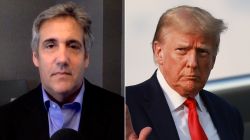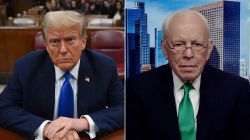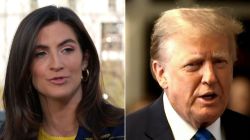President Donald Trump kicked off his formal reelection campaign Tuesday night with a rally in Orlando. His 76-minute speech featured more than 15 false statements, many of them ones that he’s repeated frequently in the past.
Here’s a fact check:
Energy
Trump boasted about his administration’s energy policies.
“And we’ve ended the last administration’s cruel and heartless law on American energy. What they were doing to our energy should never be forgotten. The United States is now the number-one producer of oil and natural gas anywhere in the world.”
“We are, by the way, the number-one producer of energy in the world because of what we’ve done right now.”
Facts First: The US was the world’s number-one energy producer before Trump took office — since 2012, under the very president Trump accused of waging the heartless war.
The government’s official source for energy data, the Energy Information Administration, said in 2016: “US petroleum and natural gas production first surpassed Russia in 2012, and the United States has been the world’s top producer of natural gas since 2011 and the world’s top producer of petroleum hydrocarbons since 2013.”
It is crude oil production in particular in which the US became top in the world under Trump, according to the EIA: it surpassed Saudi Arabia and Russia in 2018.
Russia
Trump suggested the Russian investigation was illegal and criticized the amount of money it had cost.
“We accomplished more than any other president has in the first two and a half years of a presidency, and under circumstances that no president has had to deal with before, because we did, in the middle of the great and illegal witch hunt, things that nobody have been able to accomplish, not even close.”
Facts First: There is simply no evidence that the investigation into the Trump campaign’s relationship with Russia was illegal.
Trump has previously argued that the investigation was illegally launched because there was “no crime.” Immediate proof of a crime is not required to make a probe legal, and the probe eventually resulted in the convictions of multiple Trump associates.
“And they spent $40 million on this witch hunt, $40 million. That’s right. They spent $40 million, probably a hell of a lot more than that.”
Facts First: We do not yet know the total cost of special counsel Robert Mueller’s investigation.
Mueller’s office reported spending a total of about $12 million from his appointment in May 2017 through September 2018, and there were about $13 million in related Department of Justice expenses over that period. Mueller’s office remained open for eight months after September 2018, so it is likely that the total is at least several million above $25 million.
(The Mueller investigation generated revenue as well as expenses: the US government is expected to receive $11 million as a result of asset forfeitures from Paul Manafort, the former Trump campaign chairman whose convictions Mueller secured.)
Trump criticized President Obama’s handling of the situation with Russia in 2016.
“And in September, just before the election, the FBI told President Obama about possible Russian interference, and he did nothing, because he thought that Hillary Clinton, Crooked Hillary, was going to win, that’s why he did nothing. He did nothing.”
Facts First: Obama has received widespread criticism for not acting more aggressively when he was informed in 2016 of the reported Russian interference, but it is not true that he did “nothing” at all.
Obama authorized an extraordinary public statement in October 2016 blaming the hacking on “Russia’s senior-most officials,” and top administration officials issued multiple warnings to top Russian officials. Obama has said that he himself told Russian President Vladimir Putin directly, at a G20 meeting in September 2016, “to cut it out,” and that “there were going to be serious consequences if he didn’t.” After the election, in December 2016, Obama imposed sanctions on Russia.
The Wall
Trump claimed Democrats had previously voted for a border wall.
“And you know we couldn’t get the wall approved by the Democrats, even though they voted for it four years ago and six years ago and didn’t get built, but they voted for it. All of a sudden, Trump is president, ‘We don’t want a wall.’”
Facts First: Some Democrats — notably excluding House Speaker Nancy Pelosi — voted in 2006 for the Secure Fence Act, which authorized 700 miles of border fencing. But the fencing was different than the Trump campaign proposal the Democrats opposed 10 years later, which was for a giant concrete wall.
During the 2016 campaign, Trump himself called the fencing “such a little wall” and “such a nothing wall,” making clear that he did not see it as analogous to his plans. Democrats also endorsed border fencing as part of the failed 2013 “Gang of Eight” comprehensive immigration reform bill. That, however, was part of a compromise package in which undocumented immigrants would be given a path to citizenship — so Democrats did not go from supporting a standalone fence proposal to opposing that same kind of proposal.
Fencing authorized in 2006 did get built. According to the Government Accountability Office, the US government added 354 miles of primary pedestrian fencing and 300 miles of primary vehicle fencing between 2005 and 2015, increasing “the total miles of primary border fencing on the southwest border from 119 miles to 654 miles.”
“And we are building the wall. We’re going to have over 400 miles of wall built by the end of next year. It’s moving rapidly. Moving very rapidly.”
Facts First: Wall construction is not “moving very rapidly:” as of May, zero miles of wall had been erected in places where there had not previously been a barrier. (Trump now argues that new fencing installed to replace older fencing should be counted as his wall, though he campaigned on a new, giant, concrete wall.)
Customs and Border Protection has announced that construction activities of some sort have begun for a 13-mile stretch of wall in Texas’s Rio Grande Valley, but no new wall has been built there yet, either. The agency says it has received funding for more than 200 miles of barriers, most of it approved by Congress and some of it from federal funds Trump is attempting to deploy through his declaration of a national emergency. But numerous legal challenges make it unclear how much of this emergency money can actually be spent, and how quickly. It is also unclear how many of these potential miles will be new.
Environment
Trump suggested the environment has improved under his administration.
“Our air and water are the cleanest they’ve ever been by far.”
Facts First: After a prolonged period of improvement, US air quality is now getting worse, according to the American Lung Association, which has produced an annual data report on the subject for 20 years.
The association said this year that “in 2015-2017, more cities had high days of ozone and short-term particle pollution compared to 2014-2016.”
The association said: “141.1 million people lived in counties with unhealthful levels of either ozone and/or particle pollution, an increase of more than 7.2 million Americans since the last annual report. Eight cities recorded their highest number of days with unhealthy spikes in particle pollution since the nation began monitoring this pollutant 20 years ago. And the nation recorded more days with air quality considered hazardous, when air quality reached ‘emergency conditions’ — Maroon on the air quality index — than ever before.
Clinton’s emails
Trump went after former Democratic rival, Hillary Clinton and her use of a private email server.
“Thirty-three thousand emails deleted, think of it. I keep mentioning, you know, there was a lot of corruption on the other side. But you know, the simplest thing: they get a subpoena from the United States Congress and they decide that they’re not going to give it. So, Lindsey Graham, they did delete and they acid wash, which is very expensive. Nobody does it. They acid wash those emails, never to be seen again. But we may find them somewhere deep in the State Department.”
Facts First: A server company working for Hillary Clinton deleted these emails using a free software program called BleachBit. BleachBit is not expensive. It involves neither actual bleach nor acid.
The emails were indeed deleted, in March 2015, three weeks after the House Select Committee on Benghazi issued a subpoena seeking the retention of Clinton emails. The server company employee told the FBI that he had deleted the emails after belatedly realizing he had forgotten to carry out a request made by Clinton aide Cheryl Mills, prior to the subpoena, to change Clinton’s email policy so that messages more than 60 days old would be automatically purged.
Factory production
Trump criticized the industrial policies of his predecessors.
“The people trying to stop our movement are the same Washington insiders who spent their careers rigging the system so your losses will be their gains. You know that. These are the same career politicians who presided over decades of flat wages, the loss of our manufacturing jobs, 60,000 — can you believe that? Sixty thousand. Who would believe that number? And do you know how I know it’s true? Because, if it wasn’t, I have been using it a lot. The fake news would have headlines: ‘Trump used a phony number.’ They would have headlines. It would be the biggest story. ‘Trump used’ — well, they never corrected it, so I assume, fellows, 60,000 shuttered factories, we closed up. Sixty thousand factories. It didn’t seem right. It didn’t seem like it would be possible.”
Facts First: Trump was indeed correct with this figure. According to US Census Bureau data, the number of US manufacturing establishments declined by 59,794 between 2001 and 2015.
China
Trump made numerous false statements related to China and the tariffs his administration has implemented.
“As you know, you may have read a couple of things about China. I spoke to President Xi, terrific president, a great leader of China, spoke to him this morning at length. And we’ll see what happens. But we’re either going to have a good deal and a fair deal or we’re not going to have a deal at all. And that’s OK, too. Because we are taking in billions and billions of dollars into our treasury and companies are leaving China because they want to avoid paying these large tariffs. And, by the way, when the fake news tells you that you’re paying — in the case of China, they devalue their currency, that helps them. And do you know what else they are doing? They are subsidizing those companies, and you’re not paying very much if you’re paying anything at all, the case of China. And we are taking billions and billions of dollars in.”
Facts First: Trump was wrong that Americans are not paying for his tariffs on imported Chinese goods. American importers are the ones who make the actual tariff payments to the government, and numerous American businesses have publicly said that they have been hit with higher costs they are passing costs on to consumers.
Studies of the effects of the tariffs, such as one released in March by economists at the Federal Reserve Bank of New York, Columbia University and Princeton University, have also concluded that Americans are bearing most of the expense. “Overall, using standard economic methods, we find that the full incidence of the tariff falls on domestic consumers, with a reduction in U.S. real income of $1.4 billion per month by the end of 2018,” those economists wrote.
Trump also appeared to misrepresent the US trade deficit with China.
“We would lose $500 billion a year with China. We rebuilt China. They have done a great job, but they took us for suckers. And that includes Obama and Biden. They took us for suckers. Five hundred billion, $500 billion. Somebody said you mean $500 million, that’s a lot too, right? No, $500 billion. It’s actually more than that I don’t want to be too specific: 507.”
Facts First: The general “$500 billion” and the specific “$507 billion” figures are both false: the US has never had a $500 billion trade deficit with China. The deficit was $381 billion in 2018, $337 billion in 2017.
Trump did not specify this time that he was talking about the trade deficit, but he has done so more than 100 times in the past when he used the “$500 billion” or “$507 billion” figures.
“And we are taking billions and billions of dollars in, and, remember this, and you know it as well as I do: we have never taken in 10 cents from China.”
Facts First: The U.S. government has been charging tariffs on imported Chinese goods for more than two centuries, and it took in hefty sums from such tariffs long before Trump’s own tariffs.
The Treasury received $14 billion from tariffs on China in 2014, to look at one pre-Trump year. (Again, it is US importers, not China, who have paid these tariffs.)
Unemployment and wages
“And if you take a look at the African-American community, how much progress has been made: the lowest unemployment numbers in the history of our country.”
Facts First: If you’re starting the count in the early 1970s, when the government began using its current methodology for calculating African-American unemployment, Trump is correct that the unemployment rate for African-Americans has hit a new low during his presidency, though it has increased slightly since hitting that low in May 2018.
African-American unemployment was 6.2% in May 2019, up from 5.9% a year prior.
Much of the progress, however, happened during the Obama administration. The African-American unemployment rate dropped from 12.7% in January 2009, when Obama took office, to 7.9% in December 2016, Obama’s last full month in office. It has fallen from 7.9% to 6.2% during Trump’s tenure.
“The unemployment rate is the lowest rate it’s been in over 51 years. Think of that.”
Facts First: The May 2019 unemployment rate, 3.6%, is the lowest since December 1969 — less than 50 years ago, not “over 51 years.”
“Women’s unemployment is now the lowest it’s been in 74 years.”
Facts First: The women’s unemployment rate in May 2019 was 3.5%. If you ignore the April 2019 rate of 3.4%, that is the lowest since September 1953 — less than 66 years ago, not “74 years” ago.
“Wages are rising at the fastest rate in many decades.”
Facts First: “Many decades” is an exaggeration. May 2019 growth in average hourly earnings, 3.1% year-over-year, was the best year-over-year growth since April 2009, or almost precisely one decade prior. (If you’re counting earlier periods in Trump’s own presidency, there was faster wage growth, 3.4%, in February 2019.)
Trade
Trump made a number of false statements related to trade and the US auto industry
“When I came into office, we inherited one of the worst trade deals ever negotiated, the Trans-Pacific Partnership. Would’ve put you all out of work. TPP would have dealt the death blow to the U.S. auto industry, which by the way is doing great. Many, many plants are now under construction in Michigan and Ohio, Pennsylvania, North Carolina, South Carolina, Florida. They hadn’t built one in decades and now they’re all over the place.”
Facts First: It is not true that automotive assembly plants hadn’t been built “in decades” before the Trump era, even in these particular states.
Volvo broke ground in 2015 on a $500 million car plant in South Carolina; Mercedes-Benz broke ground in 2016 on a $500 million van plant in South Carolina. Also, there are no automotive assembly plants in Florida or Pennsylvania, and there are no publicly known plans for any. (Trump could perhaps have been talking about smaller companies that produce products other than completed vehicles, but, if so, he didn’t make that clear.)
“We’re replacing the NAFTA disaster with the brand-new USMCA.”
Facts First: The USMCA is, of course, a new agreement between the US, Canada and Mexico, but its actual contents cannot accurately be described as brand-new. The agreement is more of an update to the North American Free Trade Agreement that came into effect in 1994. The deal retains a majority of the main provisions of NAFTA, most significantly the near-complete elimination of tariffs between the three countries.
While there are indeed some substantial changes, such as new rules governing where and how cars must be manufactured to qualify for tariff-free treatment, trade experts say many of the other deviations from NAFTA are minor tweaks.
“And USMCA, that’s Mexico and Canada, will create at least 75,000 new jobs for American auto workers and give a massive boost to our farmers and ranchers and growers all across the Sunshine State, and will hopefully soon have bipartisan support, because everybody wants it to happen.”
Facts First: The Trump administration has itself estimated that the agreement will produce 76,000 auto jobs within five years. An independent analysis of the agreement by the US International Trade Commission, however, estimated an increase of about 28,000 jobs in the sector.
The commission estimated a loss of about 1,500 jobs in vehicle production itself. The overall industry increase, according to the commission, would come from an increase of about 30,000 jobs in parts production.
Manufacturing
“In the eight years before I took office, on average we lost 2,000 manufacturing jobs a month. Since my inauguration, we’ve added 16,000 manufacturing jobs a month. That didn’t happen by accident.”
Facts First: Trump’s figures were basically accurate. The number of manufacturing jobs dropped from 12,561,000 when Obama took office in January 2009 to 12,355,000 in December 2016, a decline of 206,000 jobs - more than 2,100 per month.
It’s worth noting, however, that the decline occurred during the recession Obama inherited. Between January 2009 and December 2009, the economy shed nearly 1.1 million manufacturing jobs. From January 2010 until December 2016, it added 895,000 manufacturing jobs.
Experimental medications
“…And we passed something I’m very proud of. They’ve wanted to pass it for 45 years. All of the gentlemen that are sitting here from Congress, your congressmen, your senators, they helped us. It’s called Right to Try. We have the greatest medical labs in the world. We have incredible things under advisement, and our people, they were very sick. They were terminally ill. They couldn’t get anything because people said no, it might hurt them. They’re terminally ill. So I said that doesn’t make sense. And these people, if they were rich, or had money, they’d go to Asia, they’d go all over the world looking for a cure. Because the FDA would not approve what we call Right to Try.”
Facts First: Trump signed a law in 2018 to allow terminally ill patients to more easily gain access to experimental medications that have not been approved for widespread use. It is not true, however, that the Food and Drug Administration generally “would not approve” patients’ right to try such medications, or that the patients generally “couldn’t get anything.”
Scott Gottlieb, who served as Trump’s FDA commissioner until April, told Congress in 2017 that the FDA had approved 99% of patient requests. “Emergency requests for individual patients are usually granted immediately over the phone and non-emergency requests are generally processed within a few days,” he testified.
VA Choice
“…And our amazing veterans are no longer left to languish and die on endless waiting lists, standing on line, waiting for a doctor. We passed VA Choice so they could see their doctor. Our veterans were waiting on line for two days, seven days, three weeks, five weeks. You had veterans waiting on line that could have easily been taken care of. They waited so long they became terminally ill in many cases. The stories are horrible. We passed VA Choice. You go out now, you get a doctor, you fix yourself up, the doctor sends us the bill, we pay for it. And you know what? It doesn’t matter because the life and the veteran is more important. But we also happen to save a lot of money doing that. Can you believe it? VA Choice for the veterans. They’ve been trying to get that passed also for about 44 years.”
Facts First: Trump did not get the Veterans Choice program passed: the program was signed into law by Obama in 2014. (Two senators Trump has frequently criticized, the late Republican Sen. John McCain and Democratic presidential candidate Sen. Bernie Sanders, were two of the key legislators behind the bill Obama signed.)
What Trump signed in 2018 was the VA MISSION Act, which modified and expanded the Choice program. Even after that modification, it is not true that veterans are no longer waiting in lines for “two days, seven days, three weeks”: veterans are now permitted to be reimbursed for seeing a non-VA doctor if they are facing a wait of 20 days or more for a VA doctor (or if their drive to the VA is 30 minutes or more). In other words, a veteran who lives near a VA facility but is facing a wait of two weeks cannot go to a non-VA doctor.
Democrats’ position on border security
“On no issue are Democrats more extreme and more depraved than when it comes to border security. The Democrat agenda of open borders is morally reprehensible. It’s the greatest betrayal of the American middle class and, frankly, American life.”
Facts First: Democratic congressional leaders and the candidates in the party’s presidential primary do not endorse “open borders” or unrestricted migration. The Democratic congressional caucus has repeatedly endorsed billions in spending on various border security measures, including improved technology and additional Border Patrol staff. (Trump sometimes uses this “open borders” phrase as non-literal political rhetoric, but he sometimes says or suggests that the Democrats literally want the borders open.)
Pre-existing conditions
“And we will always protect patients with pre-existing conditions. Always, always.”
Facts First: We can’t fact-check what Trump might do in the future, but he has not protected patients with pre-existing conditions in the Republican health care bills he has supported so far.
The unsuccessful Republican health care legislation he supported would have weakened Obamacare’s safeguards for people with pre-existing conditions, allowing states to apply for waivers that would allow insurers to impose higher prices on people with health problems.
And as part of an ongoing Republican lawsuit seeking to get Obamacare overturned, Trump’s administration has argued that the law’s protections for people with pre-existing conditions are unconstitutional and should be struck down. He has not explained how he would protect patients if the courts actually heed his call.
He has promised a new health care plan soon, but Senate Majority Leader Mitch McConnell has said there are no plans to take up health care reform until after the 2020 election.
Healthcare
Trump criticized a key feature of Obamacare, the individual mandate
“We got rid of the individual mandate. Right? How many people are happy? They no longer have to pay for the privilege of not paying for bad health insurance. How many people are happy? Bad health care. So every time you don’t have to make out a check in order not to have health care, think of that, think of that. This is the only country you pay for the very distinct privilege of not having to pay. But you have to pay a lot. Now you don’t have to pay anymore. You don’t want it, you don’t have to pay.”
Facts First: The US is not the only country that has had a financial penalty on people who do not obtain compulsory health insurance. The Netherlands and Australia, among others, require payments from people who do not meet certain mandatory coverage requirements.
This story has been updated.




